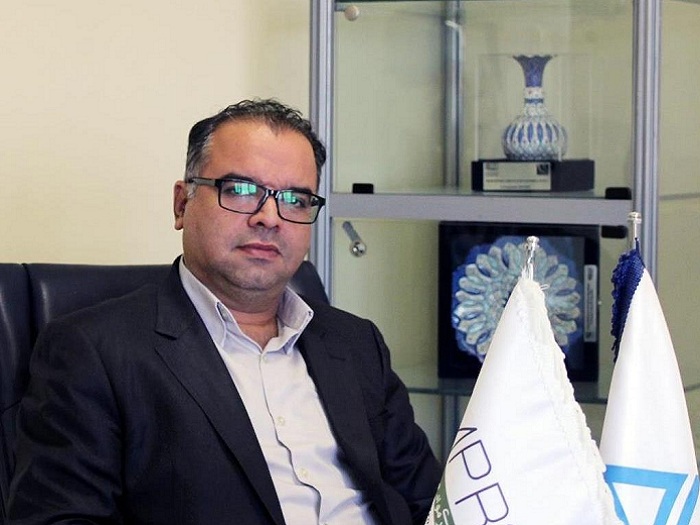Attention to the ecosystem is a priority for mineral cooperation

Director of Iran Mineral Processing Research Center: One of the most important goals of innovation systems in any country is to connect technology to the market and create wealth from it.
According to the International Iranian Stone Exhibition, mineral reserves are an important part of the national capital of any country and the optimal use of these reserves has a significant impact on the macroeconomics of countries and thus the rate of industrial growth.
In recent decades, industrialized countries with rich mineral resources have made huge investments in this sector. Today, with the multiplicity and diversity of investment capacities and the flow of capital, innovation and technology development in the mining sector and mining industries is of great importance. You can read the words of Majid Vafaeifard, director of Iran Mineral Processing Research Center in this regard:
What is the problem of large and small companies operating in the mining sector, what solution do you offer to solve it?
Due to the competitiveness of the business environment in recent decades, large companies operating in the mining and mineral industries are facing bureaucracy, inertia and lack of flexibility, despite access to financial resources and distribution channels. In contrast, small technology-oriented companies in this field, despite their high flexibility, capability and innovation, face a lack of resources and poor market access. In this way, both groups of companies need to work together to maintain their position in a competitive environment and survive. In this regard, considering the breadth and complexity of technological cooperation between companies, the INNOVATION ECOSYSTEM approach to analyze and explain the process of technological cooperation between the two groups of companies can be considered as a basic strategy.
Where was the ecosystem approach to innovation first introduced and what does it mean?
The World Economic Forum, in collaboration with Stanford University and surveying more than a thousand entrepreneurs, identified the core axes of the innovation and entrepreneurship ecosystem and provided a framework for analyzing it. Within the proposed framework, the dimensions of the entrepreneurial ecosystem included cultural support, major universities as catalysts, education, the legal and government framework, support systems, financing, human capital and labor, and finally markets. Of course, each of these dimensions has its own subset. The Organization for Economic Co-operation and Development (OECD) also provided a framework for analyzing the entrepreneurial ecosystem. The dimensions of this framework are policy, financing, infrastructure, markets, human capital, support, services, communications, culture, research and development and innovation, and finally macroeconomic conditions. In a good analysis that has been done recently in the country, considering that several factors affect the performance of the ecosystem, the situation has been studied and analyzed from macro perspectives and dimensions such as economic, political, cultural, market, etc. Also, according to the definition of the ecosystem consisting of sets of elements and institutions that have specific relationships to achieve a specific goal, related elements and institutions, each of which take on different roles, have been identified. Ecosystem Analytical Framework Evolves technological collaborations between large and small technology-oriented companies over time. This framework has a life cycle that should be considered in ecosystem analysis.
How can the actors involved in the ecology be categorized as technological cooperation between large and start-up companies?
In the study of various analytical studies of the ecosystem in general, the actors involved in the ecosystem. Technological cooperation between large and start-up companies can be divided into several groups, which can also be applied and counted in the mining and mineral industries. The first group is government organizations that are primarily responsible for governing the country, policy-making and implementation of government policies and duties in the country. Among these institutions, we can mention the government, the Islamic Consultative Assembly, the National Standards Organization, development organizations such as Imidro and Idro, the Trade Development Organization, and so on. Government organizations can provide the basis for cooperation between large and small companies through the development of various programs and policies. In addition, government agencies increase the willingness of start-ups to partner with large corporations by providing a strong regime to protect intellectual property ownership.
The second group is educational and research institutions that are responsible for providing the human resources needed to work in the ecosystem through the provision of general and specialized training. These institutions include universities, research institutes and research centers such as the Mineral Processing Research Center of Iran. The third group is financial institutions that are responsible for financing companies and research and development activities. These include banks, venture capital funds such as the Mining Investment Insurance Fund. The fourth group is the companies or the main actors of the technological cooperation ecosystem.
In fact, this refers to large industrial companies, small, medium and start-ups that work together to shape the ecosystem. Fortunately, large companies such as the National Copper, Lead and Zinc Company and large steel companies such as Mobarakeh, Golgohar, Chadormelo, Midco, etc. are present in the mining and mineral industries, which can create a good capacity for synergy with research companies and mining experts. . The fifth group is supportive institutions that take various measures for financial and non-financial support. Examples include four innovation hubs, such as the newly established Imino Innovation Center, as a subsidiary of Imidro, accelerators and outreach events such as localization fairs.
What is the role of knowledge-based companies and research centers in the innovation ecosystem in the mining and mineral industries?
One of the most important goals of innovation systems in any country is to connect technology to the market and create wealth from it. On the one hand, social pressures to promote welfare and wealth creation from investments in science and technology development, and on the other hand, economic hardships due to insufficient public resources, commercialization of research and technology achievements as one of the most important priorities of universities and research institutes. Has raised.










